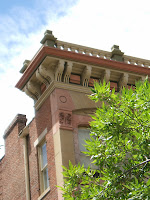


When I proposed this trip to my wife Judy at our wedding anniversary dinner in July of 2008, she was not initially keen. Her love of travel finally won her over and when I included John she was comfortable with the thought of driving the distance. John who has become quite a traveler in the last few years and loves to drive had no doubts. Without these two “on board”, I doubt the trip would have happened.
My daughter Megan was really helpful in marketing my trip and blog to her wide circle of friends. Mike, my son, gave me guidance on writing a good blog and helped with the graphic design of the bumper sticker and donation form.
All of the family and friends we met on the trip “rolled out the red carpet” for us weary travelers. We shared memories and accounts of experiences. They took us sightseeing and treated us to a wide variety of culinary delights.
Since I wanted to share the trip with others and had heard of the successful “Bike for Bread” effort started in Willimantic. I asked Victoria who heads the Windham Area Interfaith Ministry (WAIM) if she could use some fund raising support. She was enthusiastic from the start and incorporated my effort into WAIM as a funding source.
The WAIM delegates warmly received me at their meeting when I outlined my plans for the trip. The donors have done a great job giving generously to WAIM. It was a chance to involve the faith community, family and friends. Through this blog I hope I have enabled everyone to live the trip vicariously.
To all of you I say thank you. I hope you all have the chance to embark on your own dream trip or experience.
Cheers,
Free Spirit (Dave)
"To travel hopefully is a better thing than to arrive, and the true success is to labour" - Robert Louis Stevenson















































